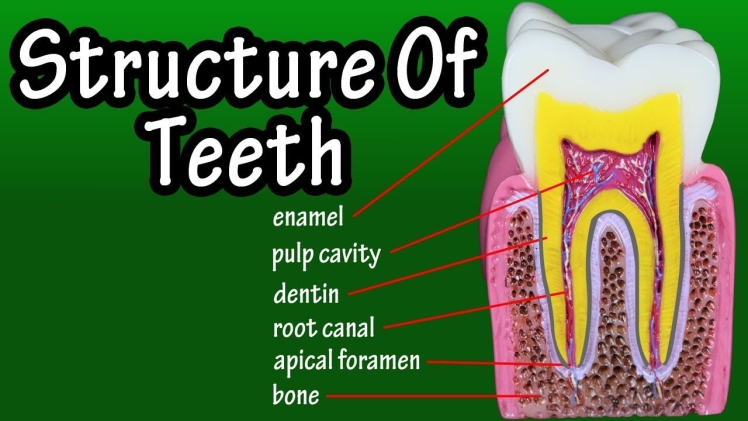In the animal kingdom, teeth are an important characteristic for many species. Besides aiding digestion, they provide many other functions. For instance, venomous snakes have teeth too (technically fangs), but their teeth are shaped like hypodermic needles, designed for puncturing and injecting venom into their prey. Similarly, human teeth are unique and serve an important role in digestion. The process of digestion starts right from the mouth- where food is physically broken down. Functionally, human teeth are composed of four types, each serving a specific purpose. They are as follows:
- Incisors
- Canines
- Premolars
- Molars
In this article, we shall explore the structure and functions of human teeth in detail.
Incisors
Adult humans have a total of 8 incisors which are present in the front upper and lower jaws. The incisors on either side of the midline are called central incisors while the adjacent teeth to the central incisors are called the lateral incisors. The primary function of this set of teeth is to hold food and tear it apart. Moreover, it is the very first set of teeth to emerge in children (between ages 6 to 8). Another interesting feature is that the upper canines are larger and longer than the lower canines.
Canines
Adult humans have four canines, with two in the upper jaw (maxillary arch) and two in the lower jaw (mandibular area). Among the other types of human teeth, canines are the sharpest and are primarily used to hold and tear food. The teeth is characterized by a sharp, pointed cusp (hence, this tooth is also known as “cuspids”). Another characteristic feature of this type of teeth is that canines have the deepest root when compared to other teeth.
Premolars
Premolars are located further back in the mouth. Adult humans have a total of eight premolars (four on each jaw). Premolars are structurally different from canines and incisors – they have a flat biting surface which is specially adapted for crushing and chewing food. Since premolars are located between the canine and molar teeth, they are also called bicuspids (having at least two cusps). During the process of chewing (also called mastication), premolars act as transitional teeth – as they have properties of both canines as well as molars.
Molars
Molars are located at the back of the mouth and are primarily responsible for grinding food. In fact, the name “molar” is derived from the Latin word “Molaris den” which translates to “millstone tooth” (millstone refers to a stone which is used for grinding wheat). Adult humans have 12 molars. The last molar teeth to develop is the wisdom tooth, which usually breaks through the gums at age 20. However, it can vary between individuals, and in some cases, it may not erupt at all. One of the reasons for this is that the wisdom teeth is considered as a vestigial organ because it has lost its original function.
In conclusion, teeth are an important part of the human body and aids the process of digestion. Explore other fascinating topics from human body organs and tissues to autotrophic nutrition and more. Alternatively, subscribe to BYJU’S YouTube channel to explore more interesting topics on science!
Let the world to know: pagalmovies

